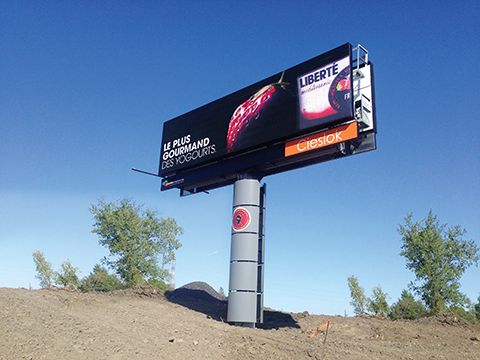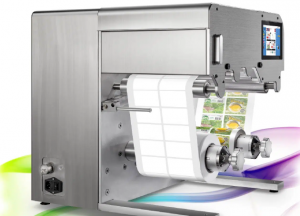Illumination: Market trends for LED signage and displays
Digital billboards, which also use LEDs, are becoming increasingly common. Of the approximately 450,000 billboards across the U.S., for example, about 0.55 per cent have been converted from static to digital. One of the main reasons is they increase potential revenue for billboard operators by increasing the number of advertisers who can pay to display their messages at any given location.

Depending on local regulations, digital billboards typically display a static image for four to 10 seconds before switching to another. In the U.S., the Outdoor Advertising Association of America (OAAA) has established a code of industry practices, including brightness standards and restrictions against animation, flashing lights, scrolling and full-motion video. In Canada, meanwhile, municipal bylaws continue to be developed to regulate the increasingly common technology.
Digital billboards displaying multiple advertisers’ messages are typically located off-premise—i.e. not on an advertiser’s own property, but rather some distance away, usually a roadside location with high visibility to traffic. Operators then sell space on the billboards to third-party advertisers, such as banks, restaurants, retailers, automotive dealerships, hotels, insurance providers and real estate agents.
An on-premise digital billboard, on the other hand, is typically smaller and installed on the property of the business it exclusively promotes. It may be mounted atop a building, on posts or within a monument. Unlike off-premise billboards, this type of sign may feature animation, scrolling or full-motion video, depending on local zoning regulations.
Another trend has been the integration of LED-based digital signage into custom-designed on-premise structures, including parts of buildings. An LED array can even be applied across a curved, dimensional surface.
“It is important to use a communication network to monitor and diagnose any issues with the entire signage infrastructure, including the LED modules, cables, etc.,” says Rushton. “With their redundancies, network systems have taught us some helpful techniques for maximizing uptime.”
A structure might even combine LED-based digital signage with LED-illuminated static signage, as with the Improve Canada sign built by Pride Signs in Cambridge, Ont., with LEDs arranged by Media Resources, which recently won an award in the Sign Association of Canada’s (SAC’s) annual competition.
In all of these cases, outdoor LED boards are a powerful tool for clear communication of the right message at the right time to the right audience. Copy can be changed, brand marketing can be aligned with consumer traffic patterns and vital messages—like public emergency announcements—can be highly useful for travellers and the community.
Stephen Montgomery is president of international business expansion for ElectroniCast Consultants, which forecasts trends in LED illumination and communication networks. For more information, visit www.electronicast.com.






